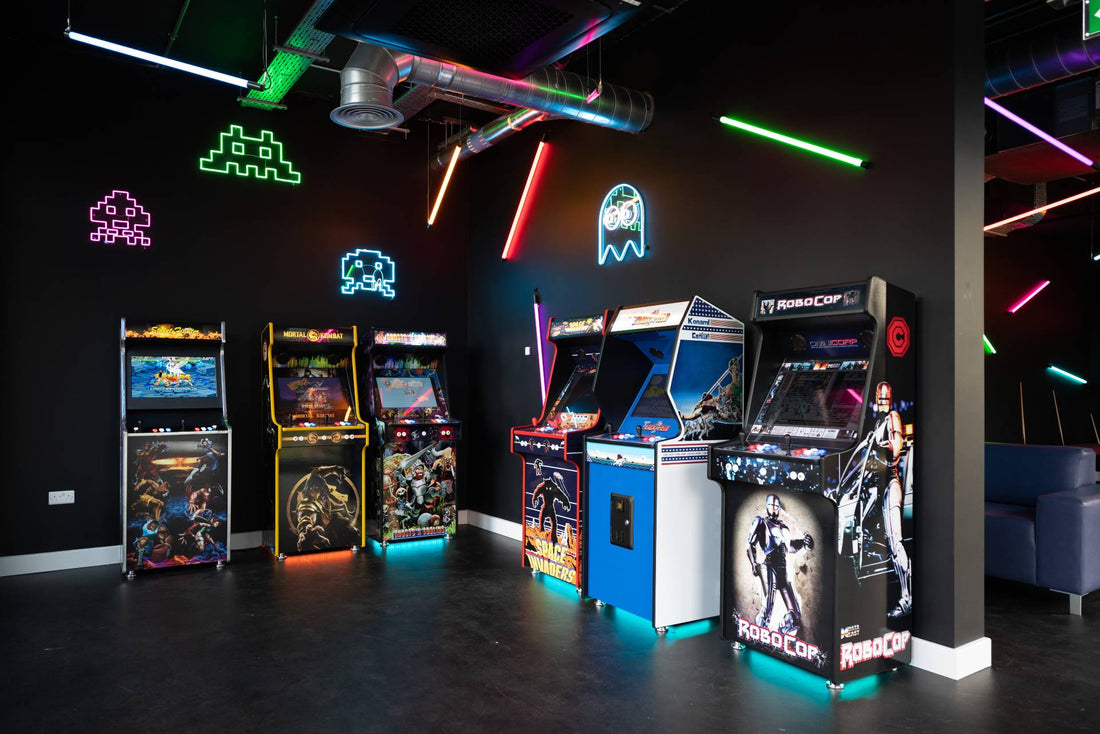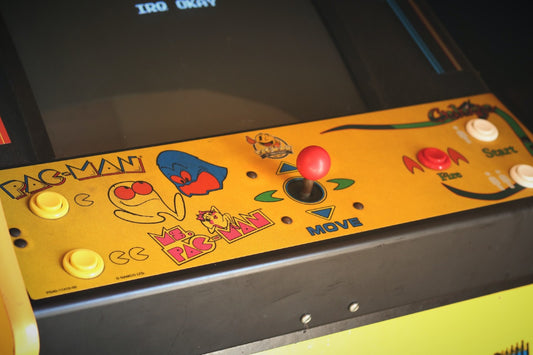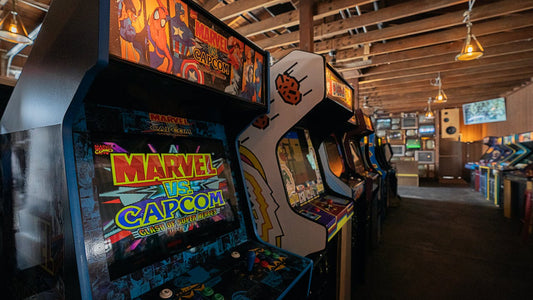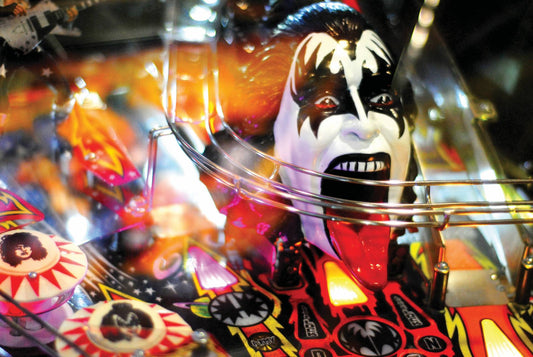
The Ultimate Guide to Arcade Machine Models & Styles
The golden era of arcade gaming was a time of great innovation. Video games were an uncharted landscape, and game developers plumbed the possibilities with scores of different arcade game types. Nothing was too outrageous. One afternoon you could be a frog making a desperate dash across traffic, and the next you might be fighting terrorists in an elevator.
The rush of new ideas didn’t stop at genres and software. Manufacturers pushed out games on different arcade machine types. And unlike the consoles of today, the form factor of machines affected play beyond just aesthetics.
So if you plan to take home an arcade cabinet, you’ve got a decision to make. Use the guide below to choose your fighter before venturing forth.
Stand-Up Cabinets
Cabinets come in different shapes, but only one form factor represents arcade gaming in the minds of most gamers: the stand-up arcade games machine. It's an unmistakable sight that never fails to trigger memories of hazy gaming halls and hours spent gunning after high scores.
The Apex is our entry into the classic category. And unlike the JAMMA arcade machine of yore, you don’t have to swap out motherboards to change games. It’s a multigame arcade machine beast that looks like it walked straight out of the golden age of arcades. Apex models are loaded with 24,875 games, all stalwarts from their respective platforms. Whether you started your gaming journey on an Atari 2600 or Game Boy Advance, there’s a title to tickle your fancy.
Evo is for those who want their pixel heroes dashing, jumping, and punching it out on a bigger screen. The official machine of choice for Capcom’s Mortal Kombat IX, it touts a 28” HD widescreen and is compatible with more modern consoles such as the PlayStation 3 and XBox 360.
Evo and Apex machines are kitted with two sets of fight sticks by default, so they’re ready for co-op chaos from the get-go. But some games like Marvel’s X-Men and The Simpsons can only be fully appreciated when played with a party of four. For that, there’s the Evo and Nu-Gen 4-player behemoths.
Cocktail Table Arcade Machine
As the popularity of arcade gaming grew, so did the need to improve the player experience. Stand-up cabinets may have dominated the space, but they didn’t leave a lot of room for just kicking your feet up and enjoying a pint with mates. These machines didn’t come with cup holders.
Enter the cocktail table arcade machine. First introduced by Taito in 1977, these cabinets doubled as tables. Controls were configured so that players were seated face-to-face, which felt more engaged and competitive. Now you could look people in the eye when you handed them utter defeat.
The machines were a smash hit, especially in pubs. Sitting players and putting beer and addictive games right next to them was a great way to get patrons and their friends to stay for hours.
You can emulate that same cosy and competitive vibe in your living room with a Synergy tabletop arcade machine. We offer both cocktail arcade machines and coffee table arcade machines, which are lower and more compact–perfect if you’re working with limited space.
Driving Arcade Cabinets
One word comes to mind when people imagine racing cabinets: massive. And while some cabs are nearly the size of small cars–we’re looking at you, Daytona USA–you don’t have to clear out your entire bedroom or basement just to bring home your own racing cabinet.
You can drive down the old-fashioned road with a stand-up driving arcade machine. The first driving game was Mutoscope’s Drive Mobile, an electro-mechanical machine that looked like an upright arcade machine, except it had a steering wheel instead of joysticks. Decades later the Nürburgring 1 would roll driving games permanently into the video gaming scene. Like its ancestor, it was also a stand-up cabinet.
The Apex Racer is a stand-up cabinet that lets you join the race without tossing out your furniture for space. It’s equipped with Happ Suzo pedals, wheels, and shifters–basically everything you need to burn virtual rubber in Out Run or Pole Position. Or any of the 80 racing greats that come loaded into the Racer.
Japanese-Style Cabinets
Japan’s arcade scene is a world on its own. While arcades in the West went away for a time after the 90s, they never went away in Japan. Walk the streets and alleys of Tokyo and it won’t be long until you find an arcade that looks as bustling and busy as ever.
Out of the uninterrupted decades of arcade play comes machines you’ll rarely see outside of Asia. Called “candy cabinets”, these types of arcade machines are characterised by their white plastic shells, a stark contrast to the wooden, colourful cabinets from Europe and North America.
But perhaps the most distinct feature of the candy cab is its height. Squat and low to the ground, candy cabs are meant to be played while sitting. Black vinyl padded chairs are as emblematic of Japan’s arcade culture as its machines.
Our Nu-Gen line is our take on Japanese-style cabinets. We’ve added a few modern touches while preserving the unique silhouette of candy cabs. The machines can be played standing up, but you can grab a couple of stools and set-it up the old fashioned way.
We hope we’ve helped you narrow down your choices. But if you haven’t, we’ll be happy to answer any questions and help you find the perfect machine to take you back to the golden era of arcades. Just shoot us an email or give us a call.



